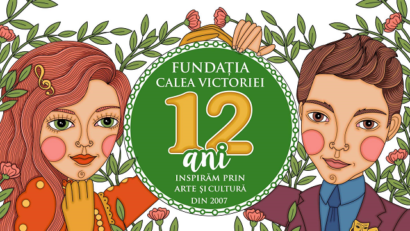The Museum of Abandonment
A call for people to explore their own traumas caused by abandonment.

Ana-Maria Cononovici, 12.10.2021, 14:00
The project dubbed the Museum of Abandonment is a campaign, conducted in the public space, a call for people to explore their own traumas of abandonment. A series of 21 short films, on the theme of abandonment, and the manner in which this phenomenon marked and shaped us as a society, have been produced as part of the project.
Simina Bădică, a curator and historian, told us more about it: “The Museum of Abandonment is a recent initiative, put into practice this year, a project funded by Association of the National Cultural Fund, an idea which we want to take to a whole new level. It is a difficult and painful part of our history. In our personal lives we often choose not to get close to difficult and painful topics, but they continue to be there, to haunt us. Although it is a virtual museum, the Museum of Abandonment is based on a very real building. What we did was to digitally scan the Hospital for Irrecoverable Children in Sighetu Marmatiei. This was the official title of this institution in 1989. The hospital was closed down in 2003 and it is now a kind of time capsule. This digital scan means that we can see in a virtual space, that visitors from anywhere in the world will be able to walk through the building, just like we did in the summer of 2021, and will be able to discover this building as we discovered it, with all its stories and dramas. It is a virtual museum in a very real building, but which we give back to virtual visitors and where we stage, just like in any museum, exhibitions. It is not a simple walk through an empty and haunted building, it is a walk through a building which we tell the story of. A story of abandonment and institutionalization of children. Basically, we try to answer the question: how did it come to those images in 1989, in the 90s, that made headlines around the world, images from the Romanian orphanages. ”
A museum that talks about the history of institutionalized children in communist and post communist Romania, a history that we have chosen to ignore for many years. Simina Badica guided us through the museum telling us what we will see if we choose to visit it virtually: “We will see a lot of things. We will see many objects that children there used every day. The hospital was closed in 2003, but a lot of things remained there, pieces of furniture, toys, desks, drawings and decorations on the walls, the names of the children on some cots, the names of the hospital units and a sad atmosphere that we will try to also transmit virtually. In each of the rooms you will find an object, a story or a testimony. This is our curatorial part, a piece of the puzzle we are trying to build, starting from the story of the children committed here, children who were not only abandoned by their parents, but also by the Romanian state, by the whole society that should have protected them. In each room we tell a story built around an object. It can be a piece of clothing, a toy, a contorted spoon that the children were fed with, or a stainless steel plate. ”
We asked Simina Bădică to tell us one of the stories she discovered and she found it hard to pick an example: “One of the reasons for choosing the museum project is that these stories are very difficult to hear. One of the documents found here included what it seemed to be a most common report, on what 30 linear meters of cloth had been used for, that is, to make three categories of straitjackets: small, medium and oversized. We thought that if they had been produced, they should still be in the hospital, because, of course, its not something that one would take home. We later found the medium sized ones. “
I asked Simina Bădică if she knows what happened to these children, if we can trace them: “We know what happened to most of them and we will also have the happy cases mentioned in the museum. We call them survivors, people we can talk to today about their life in that hospital, survivors of this so-called child protection system. Those who were adopted or integrated into family-type homes at a younger age, managed to overcome their traumas. We will also have in the museum the testimony of Robi, who was adopted at the age of 5-6, taken in foster care by a woman who became his mother and who is now over twenty, has a job, and can tell a little bit about what he went through. Very little, because he was very young. But you cannot help wondering how he had been committed to a place called hospital for irrecoverable minors. ” (EE)






























